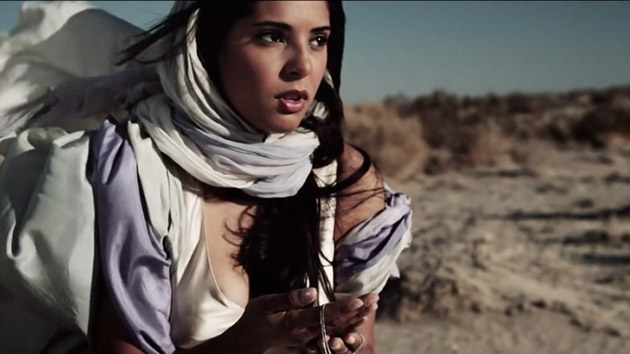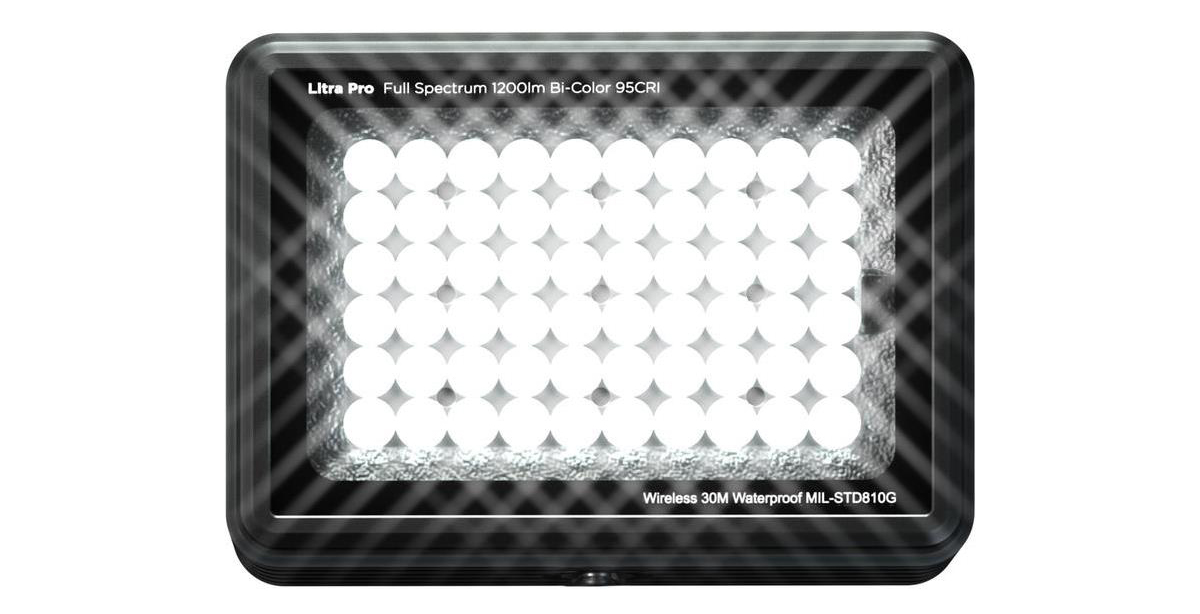Achieving an Epic Look on a Shoestring with Maxon C4D, Adobe Photoshop and After Effects, and Autodesk 123D
Over the past decade, John Robson has built a reputation for his visual effects work on projects ranging from TV series to features such as Pacific Rim and Superman Returns. But when he’s not working as an independent CG artist, art director and animator, Robson is building his résumé as a director of short films, including "Supper Time!" and "Infinite Loop" in 2012, and this year’s "Epoch."
A love story set against the backdrop of exotic sites, "Epoch" traces the journey of two demigods, Ram (Nick Denbeigh) and Luna (Denise Xavier, pictured at top) who are undone by their own impulsiveness and greed. The eight-minute film takes place in numerous locales and time periods, which meant that Robson—working with a skeleton crew and a $3,000 budget that went mostly to costumes and props—needed to rely on an arsenal of disparate equipment and software to bring the story to life.
“I had some strong visuals that shaped what the film would be even before there was much of a story,” Robson recalls. “Part of that was people fighting in the sky and shooting in vast, epic landscapes. I had this idea to create visual poetry—something that tells a love story beyond any time period. That shaped where the story went.”
You Are There – Sort of
Once Robson had an idea of what would happen to the two main characters, he looked through his archive of travel footage shot during trips with his wife to such places as China, New Zealand, Croatia and Italy. After shooting footage around the world for years, he had no plans to use it until he traveled by boat to Antarctica for a month while writing the script for Epoch.
“With all distractions aside, I started shooting the missing pieces and assembled a narrative from all of the locations,” Robson says. “All that was left was to fill in the blanks with scenes involving the actors.”
Robson and his crew shot the film in just four days and then spent nearly four months in post-production. Using shortcuts such as shooting underwater green screen footage in backyard pools and renting an RV to execute guerilla-style desert shoots, Robson brought the script to life with a minimum of expense.
“I wanted to create a short film that felt epic and adventurous while adhering to a shoestring budget,” he recalls. “The solution was joining forces with a small group of trusted colleagues, all professionals in the visual effects/motion graphics industry, and coming up with creative solutions for how to shoot a film that takes place in 12 countries over eight eras of mankind.”
To reach that goal, Robson relied on his imagination and the materials at hand. He employed projection mapping to portray some of Epoch’s locations—even those for which he didn’t have video. Using photos of the Taj Mahal, Petra Canyon in Jordan, and the Great Wall of China, for example, Robson separated the photo layers in Photoshop, then used Cinema 4D to break the layers out into 3D space.
The technique allowed him to add depth of field and subtle camera movement creating parallax. The interior of a medieval castle was modeled in C4D and rendered with V-Ray. “It worked really well,” he says. “Some people thought the projection mapped shots were actually from a video and not just photos, and that was my goal.”
A Little Bit of Everything
To get the striking visuals he was after, Robson used software creatively. In one scene, to portray a shirt exploding off the chest of an enraged Ram, Robson used C4D’s cloth deformer and dynamics. A standard particle emitter with an attractor set to a high negative value created a spherical blast of particles, which Robson linked to a cloth deformer applied to the shirt, enabling it to tear. “It ripped the shirt to shreds and I just experimented with different threshold values on the cloth and speeds of the particles until I got the right look,” he explains.
In another scene, Ram does battle with a World War I-era English soldier as a mustard gas cloud looms in the background. To get the mustard gas effect, Robson used C4D’s ramp feature, forming the cloud quickly and then slowing it down to give it a larger-scale feel.
Even the footage of the soldier was enhanced with 3D software, in this case Autodesk’s 123D. Robson shot various angles of the actor playing the soldier, used 123D Catch to upload them, and then compiled a 3D object from there. “That basically allowed me to create a 3D version of the soldier,” says Robson. “It came out a little rough, but it was perfect for what we needed for background work.”
C4D was also used for the scene in which Ram slams to the ground, causing bodies to fly into the air. Instead of setting up a complex rigging, Robson animated the bodies using deformers on the lens. “I originally considered either rigging or creating ragdoll dynamics for the soldiers, but for such a quick shot it seemed like overkill,” he recalls, adding that he needed to be able to control where the bodies would fly in frame. “So, in some circumstances, a chain of bend deformers worked really well for a quick rig as long as it didn’t involve complex movement.”

MoGraph came in handy when it came time to execute a time-lapse starry sky replacement. Robson took a matrix object with a series of points rotating with tracer objects on them, creating a smear of stars, finishing the image off with some composite work. Sky replacement was also used in a scene set in in the medieval era: “There’s a lot going on in that scene,” says Robson. “I darkened the sky and added stars and haze. Then, I added a lot of dust particulates and other things throughout.”
Making It Work
Working quickly with the budget in mind, Robson and his crew also made the most of what some might see as equipment shortcomings. In post-production, about 90 percent of the compositing was done with After Effects. That involved a heavy regimen of de-noising footage that had been shot on a Canon 5D Mark III camera with H.264 compression.
“I shot it flat, then used a plug-in called FilmConvert [
www.filmconvert.com/], which is amazing because it emulates film stocks,” Robson explains. “From there, I had to de-noise it a bit because of the compression, then apply grain back on top of it afterward. That actually turned out really well considering how compressed the footage was when it came out of the camera.”
Epoch premiered in September at the LA Shorts Fest to a sold-out show and an enthusiastic audience. Robson says making the film was a great experience because of the autonomy it provided him and the challenges it posed. “I think a lot of great ideas either end up canned or diluted because of lack of budgeting and resources or due to the apprehension of how to bring it to life in the first place, especially at an indie level,” he says.
“With 'Epoch,' I wanted to challenge myself and my colleagues to create a film without limiting any ideas during development and to utilize my resources and skills available at the time to make that goal achievable.” Robson’s next film, "Red Within," is the story of a man who seeks the source of his anxiety through a homemade sensory-deprivation apparatus. (Watch the trailer:
http://redwithin.com.)
Dan Heilman is a St. Paul-based writer and editor.


















Leave a Reply